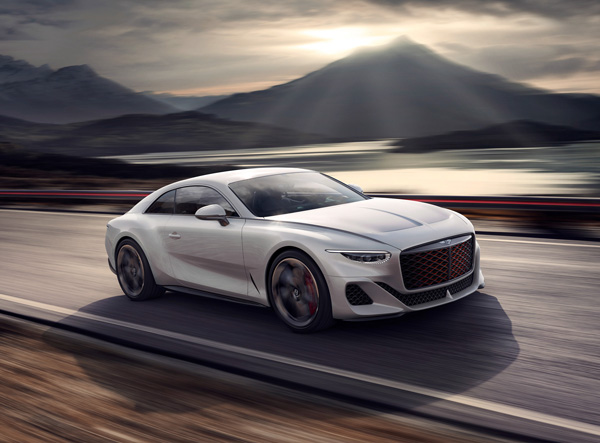
Solid gold parts have been 3D-printed for use in the exclusive Bentley Mulliner Batur.
It’s believed to be the first time the process has been used in the automotive
industry.
The ‘additive manufacturing’ (AM) technique adds up to 210 grams of 18ct yellow
gold to the coachbuilt coupe, the fastest Bentley in the company’s 103-year history.
The W12-engined Batur is restricted to just 18 examples, all of which have already
been sold to Mulliner clients at £1.65m each (excluding taxes and options), almost
$3 million Australian dollars.
The optional, 3D printed gold includes key driver touch points, such as the Charisma
Dial, encircling the start/stop button and used to change driver modes.
Gold is also applied to Bentley’s iconic Organ Stop vent controls on the dashboard,
as well as a gold insert marker on the steering wheel itself.
Bentley Mulliner has worked with renowned goldsmiths Cooksongold to craft the
unique Batur parts.
A member of the Heirmerle + Meule Group, Cooksongold is based in the historic
Jewellery Quarter of Birmingham, England, where jewellery has been made for
centuries.
The special collaboration highlights Bentley’s ability to combine new, advanced
manufacturing technologies with more traditional materials and finishing techniques.
All the sustainably sourced gold is 100 per cent recycled from old jewellery, ground
into a fine powder needed for the 3D printing technique.
Recycling ensures there is no environmental impact from mining for new precious
metals. It also reflects Bentley’s commitment to a more sustainable future and is in
line with the company’s Beyond100 strategy, to be end-to-end carbon neutral by
2030.
Every 3D gold part in the Batur is digitally designed using CAD models, before a
printing process with laser melting printers. Each is then hand finished by skilled
artisan jewellers, using traditional techniques to achieve the polish and quality that is
synonymous with a Bentley.
All parts produced for the Batur are hallmarked in Birmingham’s Jewellery Quarter as
a sign of having solid material authenticity.
Additionally, any parts manufactured in 2022 also receive the Jubilee hallmark,
celebrating the late Queen Elizabeth II’s Platinum Jubilee year.
In February, Bentley committed a further £3 million investment to double AM
capacity at the Crewe factory, converting 3D CAD models into physical parts.
Future applications will facilitate more low volume manufacturing components and
bespoke customer personalisation – including the pioneering use of 3D printed gold
in a range of new generation models.
Batur’s 6.0-litre, twin-turbocharged W12 engine generates more than 544kW, with
chassis technology that includes eLSD, four-wheel steering and 48V electric active
anti-roll bars to match performance.
The coupe offers an endless array of options, including parts crafted in titanium,
sustainable Natural Fibre composites and even low-carbon leather sourced from
Scotland.
Member of the Board for Research and Development at Bentley Motors, Dr Matthias
Rabe, said Bentley’s approach to additive manufacturing is industry leading, evident
through our pioneering use of a luxury metal in the design and development process
of the Batur.